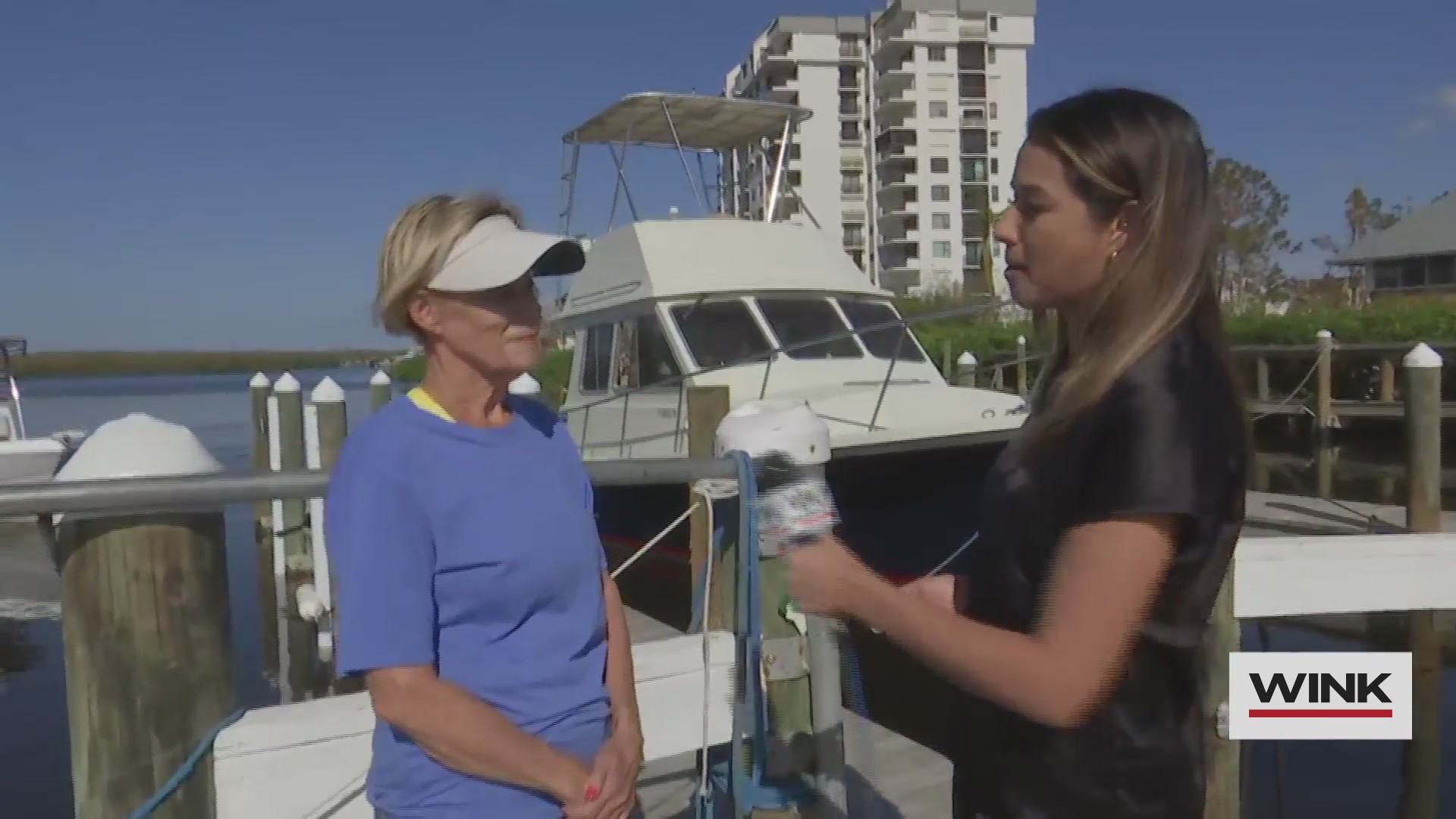NORTH PORT, Fla. – Christine Barrett was in her family’s home in North Port during Hurricane Jan when one of her children started screaming that the shower was running.
Then it started coming from outside the house. The family was eventually forced to climb onto kitchen cabinets — they put water wings on their 1-year-old — and were rescued by boat the next day.
After the flood finally receded, Barrett and her family cleaned up the wet and dirty house. There were chairs, a chest of drawers, sofa cushions, floorboards and a pile of wet drywall on the lawn. Similar scenes played out on the block as residents tried to clean up the wet mess before mold took hold.
North Port is about 5 miles (8 kilometers) inland, and the Barretts – like many of its residents – live in areas where flood insurance is not required and therefore does not have it. Now many are wondering how they will be able to afford the much-needed repairs.
“No one in this area has flood insurance because we’re not a flood prone area,” she said. “But our house has 14 inches of water.”
Many people associate hurricanes with wind damage — downed power lines, torn shingles or roofing materials, trees blown into homes or windows broken by flying objects — and Hurricane Ian’s 150 mph (241 kph) winds, certainly caused widespread damage.
But hurricanes can also produce strong storm surge, as Ian did in places like Naples or Fort Myers Beach.
AP
Heavy rains from hurricanes can also cause widespread flooding far from the beach. Ian dumped rain for several hours that rolled across the state, sending waterways spilling over banks and into homes and businesses far inland from where Ian made landfall. People used kayaks to evacuate their flooded homes, and floodwaters were still standing in some areas a week after they made landfall.
“This is such a powerful storm that brought so much water that you basically have what was a 500-year flood,” Florida Gov. Ron DeSantis said.
But flooding is not covered by your homeowner’s insurance policy.
It must be purchased separately—usually from the federal government. Although most people have the option of purchasing flood insurance, it is only required for mortgages that are backed by the government and are located in areas that the Federal Emergency Management Agency deems to be the most at-risk. Many banks also require this in high risk areas.
But some homeowners who pay off their mortgages forego flood insurance if it’s not required. Or if they’re buying a house or motorhome with cash, they might not choose one at all. And floods can and do happen outside of those high-risk areas where flood insurance is required.
There has long been concern that not enough people have flood insurance, especially at a time when climate change is making major hurricanes stronger and storms generally wetter, slower and more likely to intensify quickly.
According to the Insurance Information Institute, only about 4% of homeowners nationwide have flood insurance, even though 90% of U.S. disasters are flood-related. In Florida, that number is only about 18%.

AP
“This year, we’ve had catastrophic flooding across the U.S., including in Kentucky and Missouri, where virtually no one had flood insurance,” said Mark Friedlander of the Institute.
Hurricane Ian caused widespread flooding in areas outside the high-risk areas. About 18.5% of homes in counties under evacuation orders had federal flood insurance, according to consulting firm Milliman. In areas with evacuation orders that were outside high-risk areas, 9.4% of homes had a policy.
Last year, FEMA updated its flood insurance pricing system to more accurately reflect risk, called Risk Rating 2.0. The old system took into account the height of the house and whether it was in a high flood risk area. A 2.0 risk rating looks at an individual property’s risk of flooding, taking into account factors such as distance to water. The new pricing system raises rates for about three-quarters of policyholders and offers price cuts for the first time.
FEMA has long said the new ratings will attract new policyholders. However, a FEMA report last year to the Treasury secretary and a handful of congressional leaders said far fewer people would buy flood insurance as prices rise. Since the new rating system went into effect in Florida, the number of policies in the state has dropped by about 50,000 since August 2021.
After a federal natural disaster, homeowners with flood insurance are likely to receive more money for recovery and reconstruction than those without insurance.
For example, after a major flood in Louisiana in 2016, the average payout to a flood insurance policyholder was $86,500, according to FEMA. Uninsured homeowners could get individual benefits for needs like temporary housing and property damage, but they averaged about $9,150.
Congress sometimes provides additional aid after major disasters, but it can take months or years.
“If you don’t have flood insurance, the federal government won’t give you enough help to rebuild your home,” said Rob Moore, director of the Natural Resources Defense Council’s water and climate group.

AP
In the North Port area that was cleaning up after Ian, Ron Adette wasn’t sure if he would get flood insurance in the future because of the cost. A retired U.S. Navy sailor was cleaning out his one-story home on a corner lot after flooding broke laminate flooring, swelled wooden furniture and left the leather couch where he watched Patriots games a dirty, watery mess.
“I don’t think we could live here if we had to buy flood insurance,” he said.
But down the street, his neighbor Barrett was definitely planning to get him.
“Get flood insurance even if you don’t need it,” she advised. “Because we definitely will now.”






